In this post, we talk about seven entrepreneurs who lost everything. But you’ll see that what they have in common is that they all bounced back even stronger than before. Being a business owner and innovator is not an easy road. But it is one that is worth taking.
You can learn from these entrepreneurs and perhaps avoid some of the problems they encountered by reading their stories and reminding yourself it’s the long-term goal that matters most.
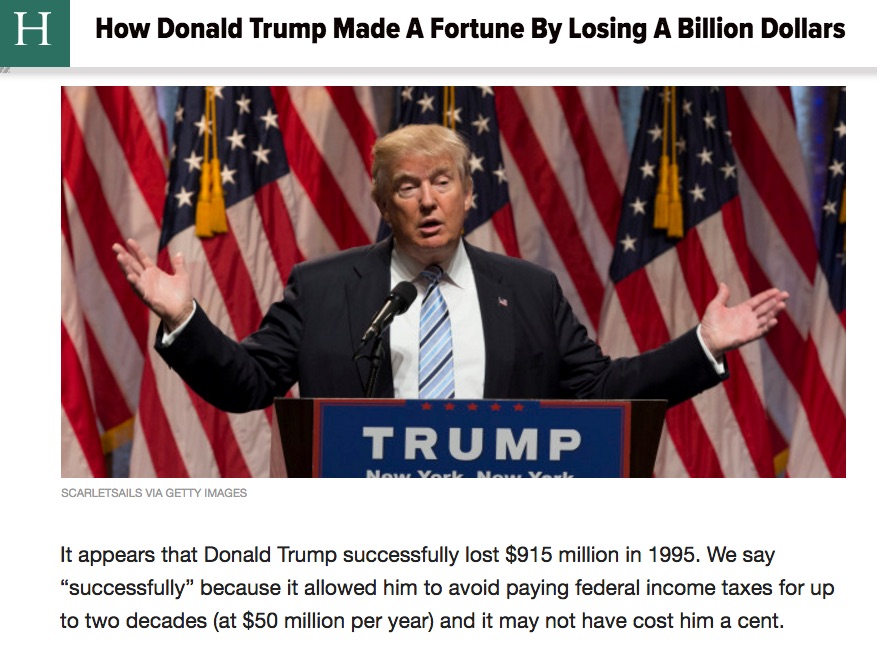 Donald Trump
Donald Trump
There has been a lot of talk in the news lately about Donald Trump’s taxes in the heat of the presidential’s election, regarding whether or not he paid taxes during a period of time when he was struggling financially. But it has surfaced recently that everything he did was totally legal because he had a 900 million dollar loss. It was a legitimate deduction. He took the deduction to salvage his businesses which he had to do, in order to avoid being sued by his investors and protect his interests. But it was all according to the law.
Donald Trump is one entrepreneur who has definitely lost everything but come back stronger than ever. He has built numerous businesses even after he suffered such a loss and has hired thousands of people to work for him over the years. He has a tenacity that people are starting to see during the presidential race that they may never have known if he had not run for president. No matter which side of the political debate you are on, you have to admit that Trump is a strong person who has bounced back after a huge loss.
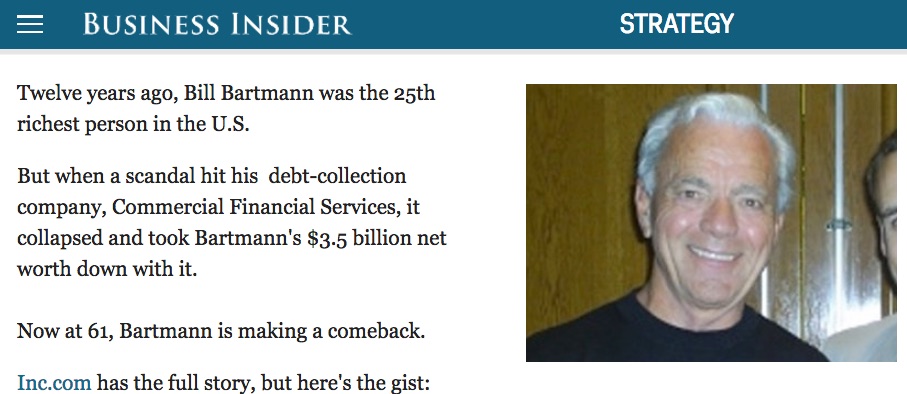
Bill Bartman
Bill Bartman, entrepreneur and founder of Commercial Financial Services (CFS) lost over a billion dollars in 1998 and was forced to shut down his company and file for bankruptcy. He and business partner, Jay Jones, were charged with accounting fraud and conspiracy for allegedly inflating his sales reports to the rating agencies. Bartman’s partner was charged but Bartman himself was cleared of wrongdoing.
Bartman came back by writing books about his challenges entitled, “Billionaire Secrets to Success” and “Bailout Riches,” both of which became best-sellers on Amazon. In 2010, he was able to regain his strength as a business owner and increase his assets.
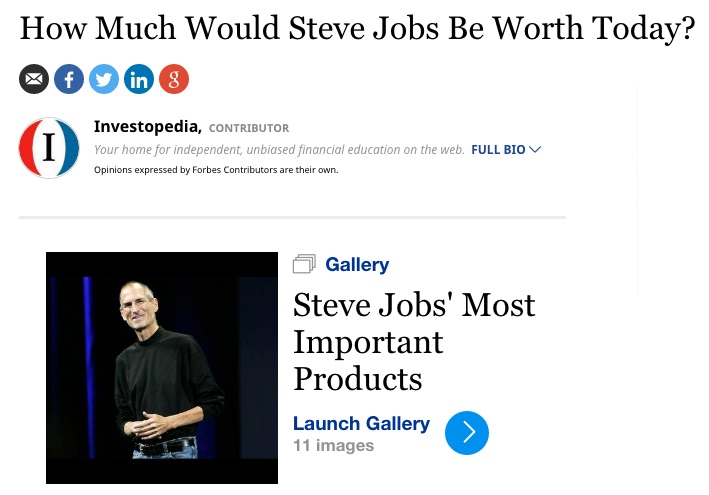
Steve Jobs
We wanted to mention Steve Jobs, not only because we think of Jobs as one of the most innovative and smart entrepreneurs we’ve ever seen, but because of the way he bounced back after a take over within his company.
The way this happened is that the board of directors that he hired to run the executive side of his company while he was creating innovative technologies to put out for Apple. In a majority vote, the board voted to appoint John Sculley whom he had hired to run his board after leaving Pepsi as their chief marketing director, voted to, oust Jobs from the board, after a number of products Jobs put out put a financial stress on Apple’s financial status.
But Jobs still held stock from the Apple company and he sold several million dollars of his stock and the company took a dive in the market practically a overnight.
Desperate to regain their status, they asked Jobs to come back to Apple to work on the Macintosh project, a project he held to be top priority. They appointed him as interim CEO. Once the Macintosh was completed, he voted all of the board out that had ousted him.
Jobs never really lost money in this situation personally, but he did lose status and power over his own company during the time the board dethroned him.
Jobs’ story is a great example of someone who lost the very company he started but bounced back stronger than ever and continued to create ingenius innovative products until his death in 2011.
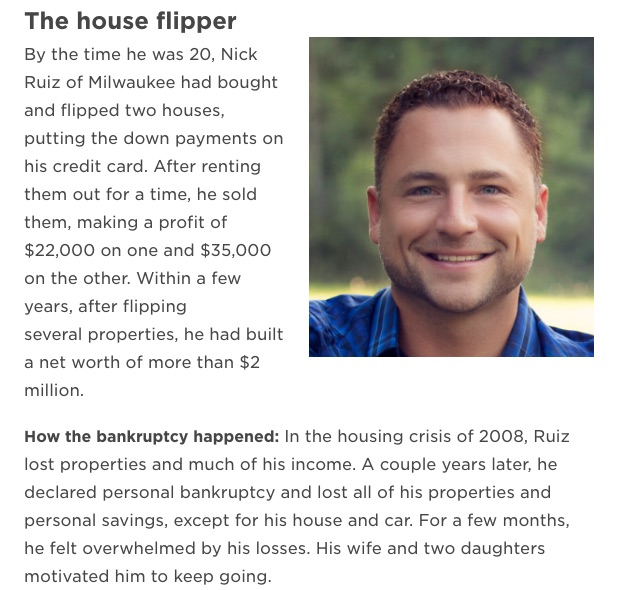
Nick Ruiz
Nick Ruiz bought and flipped two houses successfully by the time he was 20 years of age then sold them and made a profit of $22,000 on one and $35,000 on the other. He built a real estate empire in a short time that was worth more than $2 million.
Then, during the 2008 housing crises, he lost many properties and most of his income and was forced to declare bankruptcy. At the verge of giving up, he vowed to keep going in order to recoup his losses.
He retooled his business strategy and went into real estate again, this time choosing not to borrow from the banks. He started flipping houses again and eventually regained his financial control. Lesson learned: Don’t borrow money to start a business.
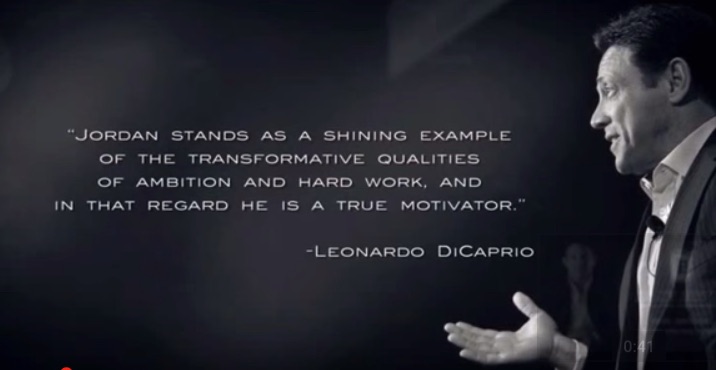
Jordan Belfort
Jordan Belfort is a multi-millionaire stockbroker who had everything At one time, he reportedly raked in some $250 million by the age of 25. But the FBI pinned him for securities fraud and money laundering a few years later. He decided to turn his life around and try to do the right thing and started writing books about his experiences. One such book, “Catching the Wolf of Wall Street,” was later developed into a movie, which allowed Belforts to regain much of his wealth he had lost through the failed real estate deals.
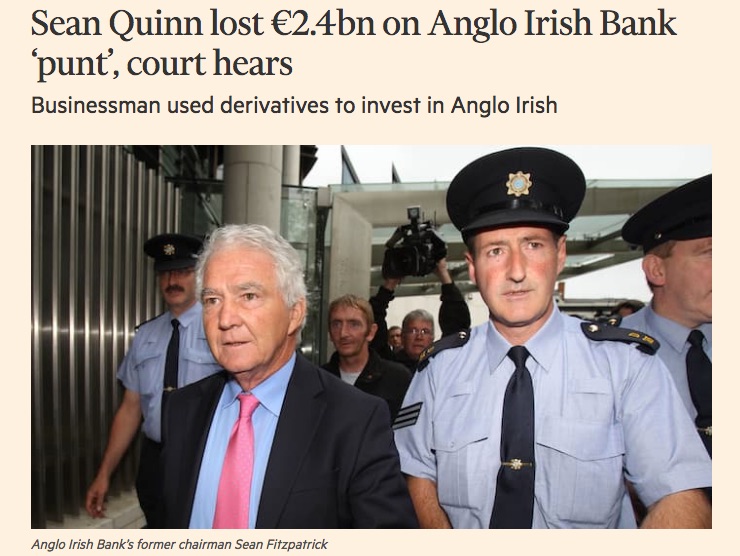
Sean Quinn
Sean Quinn is another example of a billionaire who lost it all. Sean was an Irish businessman whose net worth was once around $6 billion. But he invested twenty five percent in an Anglo Irish Bank and borrowed from his own insurance company. Then a financial crisis hit his country and cost him billions in debt. He ended up totally broke for a long time but eventually regained it over time through smarter investments.
This is a true example of how you can literally have billions and go to nothing in a short period of time by making just a few bad investment decisions.
Risk is a part of entrepreneurship but you always need to weight the risks carefully before deciding what you are going to do.
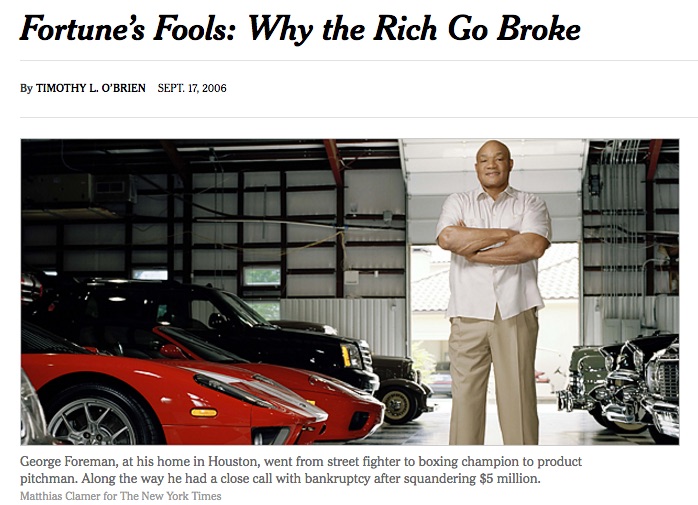
George Foreman
George Foreman is well-known for his George Foreman grills and other products that he promotes on the Home Shopping Network and others.
Before creating the grills and appearing on national shopping networks, he was known as one of the most popular heavyweight boxing champions of all times.
But once he was overwhelmed with credit card debt and unpaid loans when his boxing career took “a dive” in the late 70s. He bounced back from this overwhelming loss by created the popular shopping product known as the Foreman Grill. He sells millions of these each year and rakes in billions of dollars with his original and innovative products.
What do they have in common?
So what do all of these entrepreneurs have in common? They didn’t give up! Each one had created their own, fortune through years of toil and labor, only to find themselves overcome with debt and seemingly lost everything. Steve Jobs didn’t lose his money but he lost his power at one time when severed by Apple, the very company he created from the ground up.
But none, of these determined people every gave up and their loses, though devastating, only helped to inspire them on to even higher levels of greatness and they all seemed to learn from their mistakes.
As an entrepreneur, you must take risks. It’s part of the game of being an entrepreneur. But you can’t afford to let it get you down. Instead, if you ever find yourself in a situation of loss or disadvantage, find new courage from the fact that you can come back and do even better if you never give up.
